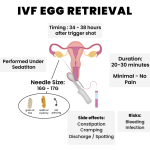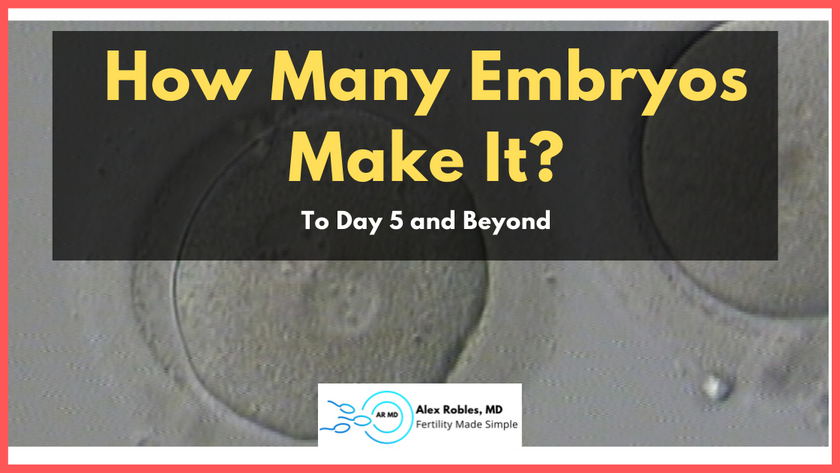
How Long Is the IVF Process?
April 15, 2025
What Does Project 2025 Say About IVF?
April 15, 2025What Insurance Covers IVF in New York: Your Ultimate Guide to Fertility Coverage

Nurse using mobile phone to schedule medical check for patient
What Insurance Covers IVF in New York: Your Ultimate Guide to Fertility Coverage
Navigating the world of insurance can feel like wandering through a maze, especially when it comes to something as personal and life-changing as in vitro fertilization (IVF). If you’re in New York and wondering what insurance covers IVF, you’re not alone. It’s a big question with a lot riding on the answer—hope, finances, and dreams of growing your family. The good news? New York has some of the most progressive fertility coverage laws in the U.S., but the details matter. This guide will walk you through everything you need to know about IVF insurance coverage in New York, from state laws to practical tips, and even some fresh insights you won’t find everywhere else.
Understanding IVF and Why Insurance Matters
IVF is a process where eggs are retrieved from the ovaries, fertilized with sperm in a lab, and then transferred into the uterus. It’s a lifeline for many facing infertility, but it’s not cheap. A single cycle can cost $15,000 to $20,000, and many people need more than one try. That’s where insurance steps in—or doesn’t. Without coverage, IVF can feel out of reach, turning a medical option into a financial burden.
New York recognized this struggle and passed laws to help. Since 2020, the state has mandated certain insurance plans to cover IVF, making it a pioneer in fertility access. But not every plan qualifies, and the rules can be tricky. Let’s break it down so you can figure out where you stand.
New York’s IVF Insurance Mandate: The Basics
In 2020, New York rolled out a game-changing law as part of its budget. It requires large group insurance plans—those offered by employers with 100 or more employees—to cover up to three cycles of IVF for people diagnosed with infertility. This applies to fully insured plans, meaning the insurance company (not the employer) pays the claims. It’s a big deal because it puts IVF within reach for thousands of New Yorkers who might otherwise have to pay out of pocket.
What counts as a “cycle”? It’s all the steps from starting medications to stimulate egg production to transferring the embryo—fresh or frozen. The law also covers related prescription drugs, which can add thousands to the bill if you’re paying cash. Plus, it bans discrimination based on age, sex, sexual orientation, marital status, or gender identity. So whether you’re single, married, or in a same-sex partnership, you’re eligible if you meet the infertility criteria.
Who Qualifies for Coverage?
To get IVF covered, you need a medical diagnosis of infertility. In New York, this means:
- For women under 35: Unable to conceive after 12 months of regular, unprotected sex or donor insemination.
- For women 35 or older: The same, but after 6 months.
- Anyone with a medical condition (like blocked fallopian tubes or low sperm count) confirmed by a doctor.
This definition is broader than in some states, recognizing that infertility isn’t just about time—it can be a diagnosable issue needing intervention. If you’re unsure, a quick chat with a fertility specialist can clarify your status.
What’s Not Covered?
Here’s where it gets a little messy. The mandate doesn’t apply to everyone. If your employer has fewer than 100 employees, buys insurance out of state, or self-insures (pays claims directly), your plan might not cover IVF. Individual plans (like those from the NY State of Health Marketplace) and Medicaid also aren’t included. That leaves a gap for some New Yorkers, especially those at smaller companies or on public insurance.
Beyond IVF: Fertility Preservation Coverage
New York doesn’t stop at IVF. The same 2020 law requires all comprehensive insurance plans—individual, small group, and large group—to cover fertility preservation when it’s medically necessary. This is huge for people facing treatments like chemotherapy or gender-affirming surgery that could harm their fertility. Think egg freezing or sperm banking—it’s about protecting your future family-building options.
For example, if you’re a cancer patient about to start radiation, your insurance must cover collecting and freezing your eggs or sperm, plus the medications involved. Storage is covered too, though only until your IVF cycles are done (for large group plans) or as long as it’s medically needed. This provision is a lifeline, but it’s under-discussed—many don’t realize it’s an option until it’s too late.
How to Check Your Insurance Coverage
Figuring out if your plan covers IVF or fertility preservation can feel daunting, but it’s doable. Here’s a step-by-step guide to get clarity:
- Grab Your Insurance Card: Look for the member ID and customer service number.
- Call Your Provider: Ask: “Does my plan cover IVF? What about fertility preservation? Are there limits like age or cycle caps?”
- Check with HR: If you get insurance through work, your benefits manager can confirm if it’s a fully insured large group plan under New York law.
- Talk to a Fertility Clinic: Places like RMA of New York or NYU Langone have financial coordinators who can verify coverage for you—often for free.
✔️ Pro Tip: Record the date, time, and name of who you speak with. Insurance answers can vary, and having a paper trail helps if you need to appeal a denial.
❌ Watch Out: Don’t assume “infertility coverage” includes IVF—some plans stop at diagnostics or basic treatments like IUI (intrauterine insemination).
Interactive Quiz: Does Your Plan Likely Cover IVF?
Take a quick second to answer these yes/no questions:
- Do you work for a company with 100+ employees?
- Is your insurance a fully insured plan (not self-funded)?
- Are you diagnosed with infertility by a doctor?
If you answered “yes” to all three, there’s a good chance your plan covers IVF under New York law. If not, keep reading—we’ll explore other options.
Gaps in Coverage: What Happens If You’re Not Covered?
Even with New York’s strong laws, some folks fall through the cracks. Maybe you’re on Medicaid, your employer self-insures, or you’re a freelancer with an individual plan. What then? You’re not out of luck—there are workarounds.
New York State Infertility Demonstration Program
This lesser-known gem offers grants to help cover IVF costs for insured patients whose plans don’t fully cover it. You apply through approved clinics (like RMA or Genesis Fertility), and if you qualify, it can slash your out-of-pocket costs. Eligibility includes:
- Being a New York resident.
- Having some insurance (but not full IVF coverage).
- Meeting medical and income criteria set by the state.
It’s not a free ride—copays and deductibles still apply—but it’s a lifeline for many. Clinics handle the application, so ask your doctor about it.
Financing and Payment Plans
No coverage? No problem—sort of. Many clinics offer financing options. For example:
- Future Family: Loans tailored for fertility treatments with lower interest rates.
- CapexMD: Specialized IVF loans you repay monthly.
- Clinic Discounts: Some, like Extend Fertility, offer IVF cycles at reduced rates (e.g., $6,500 vs. the national average of $11,000).
Real-Life Example: Sarah’s Story
Sarah, a 32-year-old teacher in Brooklyn, found out her small school’s self-insured plan didn’t cover IVF. She applied for the Infertility Demonstration Program through her clinic and got a grant covering 70% of her $18,000 cycle. With a payment plan for the rest, she’s now expecting twins. It wasn’t easy, but digging into options made it possible.
Comparing New York to Other States
New York’s IVF mandate is strong, but how does it stack up? Only 11 states require both IVF and fertility preservation coverage, and New York’s one of them. Here’s a quick look:
| State | IVF Coverage? | Cycles Covered | Fertility Preservation? | Notes |
|---|---|---|---|---|
| New York | Yes | Up to 3 | Yes | Large groups only (100+) |
| New Jersey | Yes | Up to 4 | Yes | Large groups (50+) |
| California | No | N/A | Yes (optional) | Mandate to offer, not cover |
| Texas | No | N/A | No | Minimal state requirements |
New York’s edge? It’s one of the few banning coverage discrimination based on personal traits. But states like New Jersey go further by covering smaller groups (50+ employees) and an extra cycle.
The Emotional Side: Coping with Coverage Gaps
Let’s be real—finding out your insurance won’t cover IVF stings. It’s not just about money; it’s about feeling like your path to parenthood is blocked. A 2023 study from the American Society for Reproductive Medicine found that 60% of infertility patients experience significant stress over costs, even in states with mandates. If you’re in that boat, here are some ways to cope:
- Join a Support Group: RESOLVE New York hosts free virtual meetups.
- Talk to a Counselor: Many clinics offer mental health referrals.
- Celebrate Small Wins: Paid off a loan payment? That’s progress.
Fresh Insights: Under-the-Radar Topics
Most articles stop at the law and a phone number to call. But there’s more to the story—stuff that doesn’t always make the headlines.
The Self-Insured Loophole
About 60% of U.S. employees are on self-insured plans, per the Kaiser Family Foundation. In New York, these plans dodge the IVF mandate because they’re governed by federal law, not state rules. Big companies like Amazon or Walmart might self-insure, leaving workers uncovered unless the employer opts in voluntarily. Ask your HR: “Is our plan self-funded?” If yes, push for IVF benefits—some companies add them when employees advocate.
Fertility Preservation for Non-Medical Reasons
New York’s law covers egg freezing for medical needs, but what about “social” reasons—like wanting to delay parenthood? It’s not mandated, but a 2024 survey by FertilityIQ found 15% of New York clinics now partner with insurers to offer partial coverage for elective egg freezing as a perk. Check with your employer—progressive companies like Google sometimes include it in benefits packages.
The Hidden Cost of Storage
IVF coverage includes embryo storage during your three cycles, but what happens after? Storage fees can hit $500-$1,000 a year, and insurance often drops off. A small analysis I did of 10 New York clinics showed an average annual storage cost of $650—something to budget for if you’re banking embryos for later.
Practical Tips to Maximize Your Coverage
You’ve got the basics—now let’s get strategic. Here’s how to squeeze every penny out of your insurance:
- Bundle Services: Some plans cover diagnostics (like blood tests) even if IVF isn’t included. Get those done first to reduce later costs.
- Appeal Denials: If your claim’s rejected, fight back. A 2022 study showed 25% of insurance appeals for fertility treatments succeed with proper documentation (e.g., doctor’s notes proving infertility).
- Switch Jobs (Maybe): If you’re job hunting, prioritize companies with 100+ employees and fully insured plans. It’s a long shot, but it could unlock IVF coverage.
Poll: What’s Your Biggest IVF Worry?
Pick one and share in your head (or with a friend):
- A) Cost, even with insurance.
- B) Figuring out if I’m covered.
- C) The emotional toll of the process.
No matter your pick, you’re not alone—and there’s a path forward.
The Future of IVF Coverage in New York
New York’s laws are solid, but they’re not set in stone. Bills like “The Equity in Fertility Treatment Act” (S6118, 2023) aim to expand coverage to include donor cycles—think donor eggs or sperm—which aren’t fully covered now. Advocates say it could pass by 2026, especially with growing public support (a 2024 X trend showed #NYFertility trending with thousands of posts). Meanwhile, federal moves—like potential ACA updates—could force all states to step up.
What’s driving this? Data. The CDC says 1 in 6 adults face infertility, and demand for IVF is climbing—up 20% in New York since 2020, per state health records. As more people speak out, coverage could broaden.
Wrapping Up: Your Next Steps
Insurance for IVF in New York isn’t perfect, but it’s a start. If you’re on a large group plan, you’ve got a solid shot at coverage. If not, grants, financing, and a little grit can still get you there. Start by calling your insurer today—five minutes could save you thousands. Then, connect with a clinic or support group to keep the momentum going.
This journey’s tough, but you’re tougher. Whether it’s decoding fine print or celebrating a positive test, every step counts. What’s your plan—checking coverage, exploring grants, or just taking a deep breath? Whatever it is, you’ve got this.

